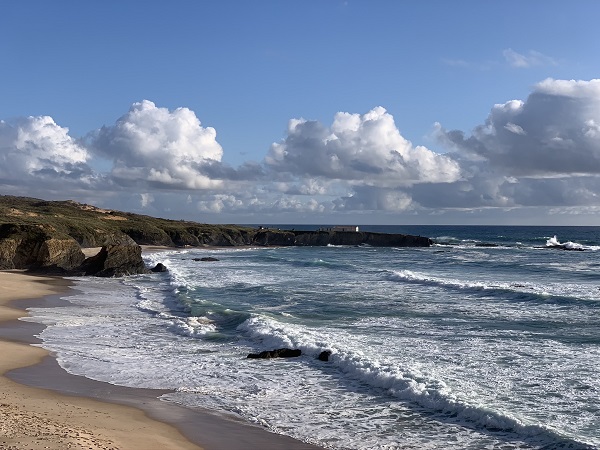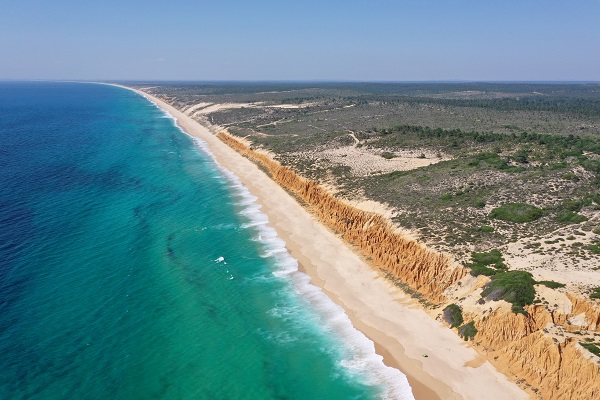Imagine a beach, sandy dunes — a small fishing town down the road. A couple of local eateries perched on a cliff. Long ripples of waves, clean Atlantic waters — no sprawl, no crowds, just the warmth of the sun, sea and sky. Welcome to the coast of the Alentejo. And, if the coast of the Alentejo is not on your list, you are really missing something. This is the place to explore, enjoy and relax.
The Alentejo is the heartland of Portugal, home to rolling plains, cork forests and with endless views under a crisp blue sky. But the Alentejo goes beyond land. In fact, its name tells us it is also beyond water — literally, beyond (além) the Tejo River. From north to south, the region is surrounded by water with the Atlantic Ocean touching its southwestern coast. Here there are more than 85 miles of beaches along the Alentejo’s Atlantic shore, one of the most conserved coastlines in Southern Europe. Rimmed by green pine cliffs, paths will lead you down through dunes to the seas, where ocean breezes and clean golden sands await.
Getting to these pristine beaches is easy, but choosing one is not. You could cycle, hike or drive and try a different one every day, and sample all the breathtaking views the cliffs have to offer. From Troia, the closest to Lisbon, to Zambujeira do Mar, to Almograve, Malhão, Melides and Porto Covo, there are many options. You could pick one, and come back again and again and explore. With so much sunshine, there is a beach for everyone.


Just over an hour south of Lisbon, the Sado Estuary Natural Reserve features grassy dunes, brackish pools and is home to many species and diverse flora. By the Sado River’s mouth, you can meet a community of dolphins that live and play here. This is one of the few places in the world where the species lives in a brackish habitat.
And, you will also hear the songs of more than 200 bird species. The biodiversity at the protected Sado Estuary makes it a sanctuary for many animals.
Going south along Portugal’s Alentejo Coast, this 9-mile strip of land near Sines, a historic port, is a natural reserve. The crystal-blue waters and golden sand of the Natural Reserve at the lagoons of Santo André and Sancha are home to rare fish species. And, in this protected area, thousands of migrating birds gather in between seasons.


Although the Reserve has a beach, the lagoons are entirely separated from the Atlantic. Swimming in these waters is safe and calm, and recreational areas are marked to protect the nesting species in the shoulder seasons.
The Alentejo is home to Portugal’s most conserved Atlantic coastline with miles of wild and often secluded beaches carved into the cliffs. The Southwest Alentejo and Vicentina Coast Natural Park cover more than 60 miles of protected land and shore, stretching from São Torpes near Sines down to Cape St. Vincent, Europe’s most south westerly point. Beaches abound, as does a traditional way of life, fishing villages and great places to dine. This protected coastline has 35 certified habitats housing more than 100 rare species of plants, and the cliffs hide nests of white storks.
Driving between both ends of this coast takes less than 3 hours and you are welcomed to make stops along the way to discover magnificent deserted beaches, taste delicious fresh fish and admire the natural silhouette of the cliffs.



